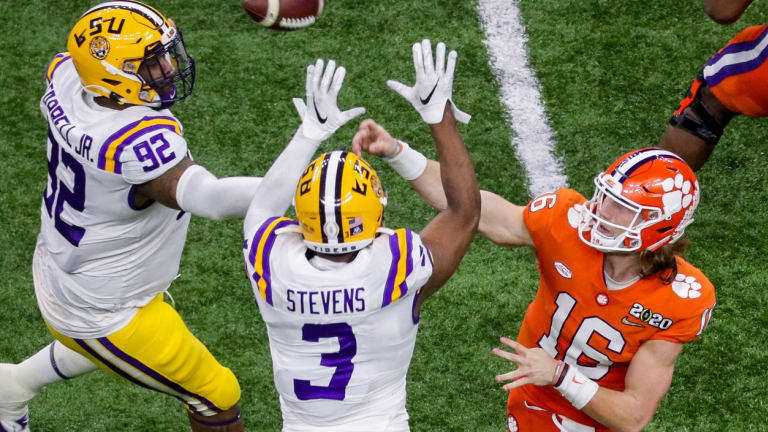
Best Way to Give College Athletes Piece of Pie Still Up in Air.

Now what?
The NCAA, under pressure from court rulings, has taken another step toward allowing ``student-athletes’’ to make money from their ``Names, Images and Likenesses.’’ Headline writers have shortened the issue to ``NIL.''
That also could be a reference to how much of an idea of we have on how this is all going to play out.
The idea of compensation for athletes in sports where schools pay coaches tens of millions to bring in hundreds of millions is a good one. Period.
``Big change coming in college sports,’’ was a phrase thrown around on television newscasts Wednesday. That made it sound like a done deal.
It is far from that. Because ``the devil is in the details.'' And no one knows how that’s going to play out.
I saw a lot of plans for compensation. I didn't see a lot of safeguards for not letting things get out of hand.
The question of how best to turn NIL compensation into a working system is. . . a giant can of worms.
The key problem, of course: How do you allow players—let’s face it, they’re players as well as ``student-athletes’’—to make money without creating a whole slew of unintended consequences?
Among them. . . how do you keep players from the richest schools from raking in massive dollars that widen the competitive gap? How do you keep over-the-top boosters from funneling money to the most coveted athletes, opening the door to myriad problems?
How do you prevent all kinds of other corruptions from rearing their ugly heads? Yes, there has been a ton of hypocrisy in our ``amateur’’ college sports over the years. But this promises to be a whole different ballgame.
Was it time for this to happen? Yes. Is NIL fraught with peril? Oh, yeah.
Also complicating things, as noted by the NCAA committee that announced its recommendations: Because the players—um, student-athletes—are not organized, they won’t be able to do group licensing for things like the EA Sports video games that were a prime legal example of how athletes were exploited.
Players not sharing in video-game revenue, you may recall, was central to the litigation that has put college-sports’ plantation system in its current jeopardy.
And when you throw in the fact that in the modern digital world, mere ``influencers,’’ people who are paid to mention or recommend products, can earn jackpot dollars—wow.
This is going to be a wild ride, coming up with a system that addresses all of these lucrative competitive-fairness issues.
Considering the revenue college sports will lose from the COVID-19 epidemic, the timing could not have been more precarious.
And wait till the non-revenue student-athletes find a litigious way to say, ``Hey. What about us?’’
All of that said, I believe student-athletes are deserving of a greater financial reward in the big business of NCAA sports—notably football and basketball.
That’s why I thought the attempt that started at Northwestern several years ago to form a players’ union was a good one. If they had obtained a voice at the table then, it would be easier now to answer the NIL questions facing our college sports world today.
But that’s only a piece in the puzzle.
It would be easy to see the discussion about rules for allowing players to make money from the Names, Images and Likenesses dragging on for years.
Except that the NCAA is under pressure to come up with a plan next winter that will go into effect for the 2021-22 athletic seasons.
Given the current state of the pandemic world, compensation for college athletes doesn’t seem like that big of a deal. Figuring out how to bring back spectator sports is a much larger question.
But finding a reasonable way to enact rules for players to benefit financially from their Names, Images and Likenesses is going to be a major challenge, too.